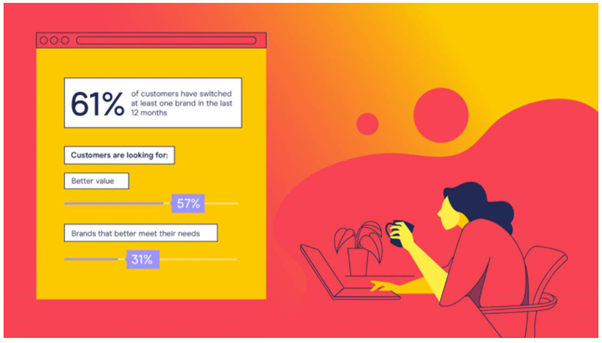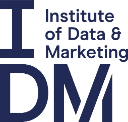Gone are the days of mass, untargeted broadcasting. Today, marketers turn to the most reliable source of information: customer data.
Unfortunately, some marketers still struggle with the data-driven approach. To help you tackle your data blues here are 12 tips to help you access, analyse and compare marketing data.
1. Understand who your ideal customer is
Data allows you to understand what your customer's preferences are, how they want you to communicate with them, their interests, actions, attitudes, and who your ‘ideal’ customer is.
2. Build loyalty
Using customer data to influence your communications will foster a connection and loyalty with your existing and prospective customers.
Your aim is to reduce churn and, in turn, increase the lifetime value of each of your customers, whether they are shoppers, donors, patients, or students.
3. Increase the lifetime value
The following piece of research, from the DMA, shows that customers are keen to switch to brands that serve them best.
While some customers are creatures of habit, 61% are not. Firstly, they are looking for better value, and secondly, customers want their needs to be better met.

4. Increase your customer’s appreciation
By understanding what your customers value about your product, you can target your marketing to suit their needs and interest.
Two consumers buying the same product may have separate drivers for purchasing. Gaining insights into what motivates people to select your product or services will lead a more rounded understanding of your audience and allow you to target accordingly.
5. Customer service
Using data in your marketing gives customers the level of service they expect and allows you to build on your relationship.
Without this, the majority of customers would disregard your brand entirely or not consider it a feasible option for their business. See this blog about DFS and how they used email to respond to their customer’s opinion on customer service.
6. Respecting customer data will build trust
Research shows that the increase in business’s respect for customer data, with the introduction of GDPR legislation, has led to increased confidence in the ability of businesses to meet customer’s needs. Since the law was introduced, in May 2018, this has risen to 19% in September 2018 and to 43% in August 2019.
7. Understand where to find your customers
Different people spend their time on different media, some people would love nothing more than receiving an exciting surprise piece of mail through their letterbox, to others its considered junk.
Some consumers may spend all their social media time on Facebook, while for others it’s Instagram. Make sure you are talking to them where they are, rather than where you think they are.
8. You can segment your audience
If you speak to all of your customers the same no matter what their interest or motivation for your product, you’ll be missing the mark more often than you are hitting it.
As a result, your audience will see you or your communications as irrelevant and disengage.
9. Learn which communications or channels convert
Marketing attribution attempts to assign credit to each marketing touchpoint. The goal is to try and determine what media are driving the purchase, while not forgetting which others may have helped along the way.
10. Find out which customers are your repeat buyers
By understanding which customers are your regulars, vs your seasonal customers, you can tailor your direct communications towards them and know when and where to focus your energies.
11. Predict the future
Predictive modelling is a great way to help you understand which prospects are most likely to become customers, and which are most likely to become your repeat buyers.
Understand who these people are, and their behaviours, attitudes, and demographics, so you can tailor your content and target more accurately.
12. AI and machine learning
In marketing, we use AI and machine learning for chatbots, understanding customer behaviours and attitudes down to minute detail and even providing data-driven decisions on creative.
We have a selection of data-driven courses to help you put data at the centre of your decision making. To learn more, take a look at our IDM training courses and qualifications below.

.png)